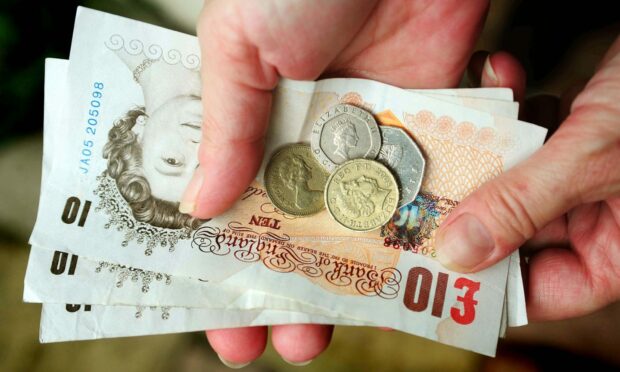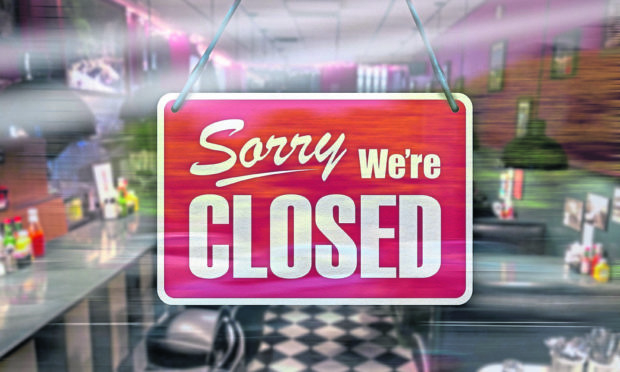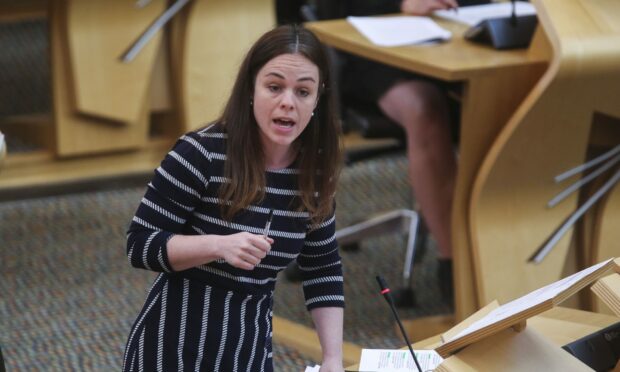Scotland’s finance secretary has unveiled her £35 billion spending plans, which she says will get people, businesses and services “back on their feet”.
But Kate Forbes left many taxpayers facing the prospect of higher bills and cuts to local services in budget for the year ahead.
Business leaders were also “underwhelmed” by the package of support on offer.
And Ms Forbes gave little away on the future of the A9 and A96 dualling programmes.
Here’s how the main spending commitments are being spread out across the regions, and how they will affect households already dealing with a legacy of lockdown and economic pressure.
Key measures include:
- Local authorities will be given full “flexibility” to raise council tax.
- Higher earners are set to pay more in income tax.
- Businesses will continue to get rates relief in key sectors.
- Record funding of £18 billion will go to health and social care services.
- Adult social care staff will get a £10.50 minimum wage.
Ms Forbes said the Scottish economy is now expected to recover to pre-pandemic levels by April to June 2022, almost two years earlier than previously forecast.
1. Council taxes set to rise

Ms Forbes said the Budget delivered a settlement for local government that “recognises the leadership role” councils play in their communities and in the national recovery
However, she left local authorities with some tough decisions to make after handing them “complete flexibility” to set council tax rates, ending the previous freeze.
The SNP have quietly opened the door to massive council tax rises next year.
– Tory MSP Liz Smith
Budget papers say: “In setting council tax rates, we expect councils to take full account of local needs and of the impacts on household budgets of the decisions they make.”
Council funding, excluding cash related to the pandemic response, is due to rise from £11,124.5m to £11,145.4m.
But that is significantly below the £700m uplift local government chiefs said they needed simply to “stand still”.
Conservative MSP Liz Smith warned: “The SNP have quietly opened the door to massive council tax rises next year.”
The Budget also paves the way for the controversial Workplace Parking Levy from next year and the resumption of work on a Visitor Levy, also known as the “tourist tax”.
2. Higher earners will pay more tax

Ms Forbes said income tax rates next year would remain “unchanged”.
The starter and the basic rate bands will increase in line with inflation, while the higher and top rates would remain frozen at current levels.
Freezing the higher rate threshold raises an additional £106 million in revenues in 2022-23.
‘Progressive’
Revealing he plans, Ms Forbes said: “A progressive income tax policy means the majority of Scottish taxpayers will continue to pay less income tax than if they lived elsewhere in the UK, while those who earn more, will pay more.”
The government said no taxpayer – on their current income – would pay more Scottish income tax in 2022-23 than they did in 2021-22.
Those earning less than £27,850, which is 54% of Scottish taxpayers, will pay slightly less income tax in 2022-23 than if they lived elsewhere in the UK.
3. Business rates relief continues, for now

The government had been under pressure to continue tax relief for retail, hospitality, leisure and aviation businesses, which paid no non-domestic rates during 2021-22.
But they were left “underwhelmed” when Ms Forbes said these sectors would get 50% relief for just the first three months of 2022/23, capped at £27,500 per ratepayer.
The minimum many businesses in the affected sectors expected was 50% rates relief for the full year, in line with England.
The finance secretary said the move would prevent a “cliff edge” for businesses.
Small businesses, with a rateable value of less than £15,000 on a Scottish high street, will also continue to pay no rates for the entirety of next year.
4. Early support for shift from oil and gas

The Budget included just £20m of the £500m Just Transition Fund for the north-east and Moray, which will be used to help identify “key projects” in the move away from reliance on fossil fuel jobs.
Ryan Crighton, policy director at Aberdeen & Grampian Chamber of Commerce, said it’s a welcome step but the region needs more.
“We have been hearing a huge amount about accelerating our path to net zero, something which businesses in the north-east are fully committed to, therefore 4% doesn’t feel like stepping on the accelerator,” he said.
‘Wiggle room’
It was the first SNP-Green budget too.
Tories asked for assurances the budget makes no changes to commitments to dual the A9 and A96 trunk roads.
Ms Forbes said the government is still on track despite concerns the SNP have left “wiggle-room” to keep Green government partners happy.
Other plans include £414m for energy efficiency, and low carbon and renewable heat.
It comes with £160 million to support those least able to pay for home
energy improvements and tackle fuel poverty. There will be £60 million for large scale heat decarbonisation projects.
5. Is it enough for the health service?
The Budget provides record funding of £18bn for health and social care, including extra spending of £1bn.
To address staff shortages in social care, £200m will be used to help deliver a £10.50 minimum wage.
Ms Forbes said the overall package also provides £1.2bn for mental health.
She hopes the package will “respond to the pressures created by the pandemic”.
However, Labour said it was not enough and accused the SNP of “managed decline”.
What did the finance secretary say?
Kate Forbes got her defence in early, saying the funds would have been bigger if it wasn’t for Brexit.
But she added: “My last two Budgets have been shaped by our experiences of Covid but we are now lifting our eyes to the future.
“This is a transitional Budget, as people, businesses and services get back on their feet.
“This Budget focuses on tackling the climate emergency, reducing inequalities and supporting economic recovery.
“It is the first budget of this partnership in government and has been development in cooperation with the Scottish Green Party, delivering on commitments made as part of the Bute House Agreement. I welcome their support and their constructive challenge.”
